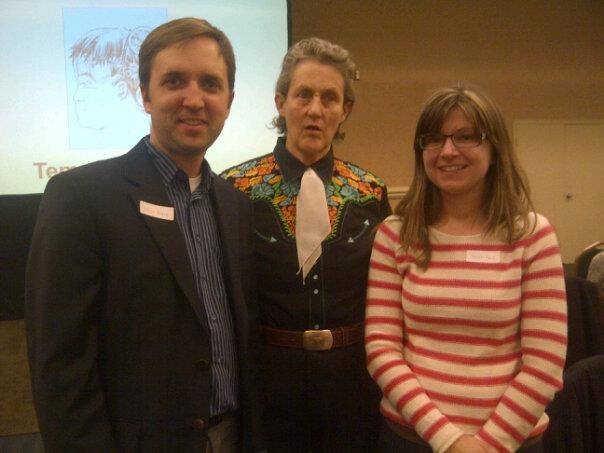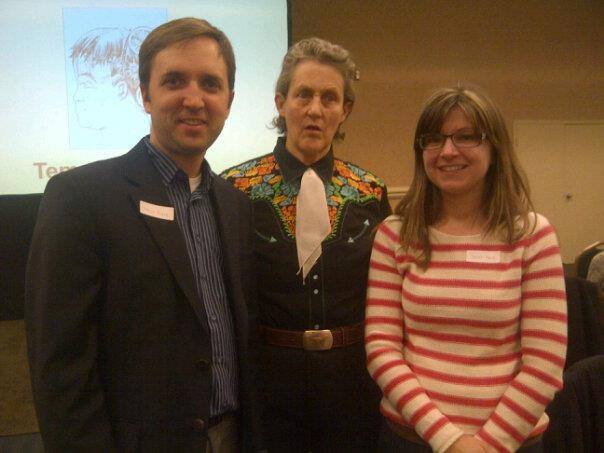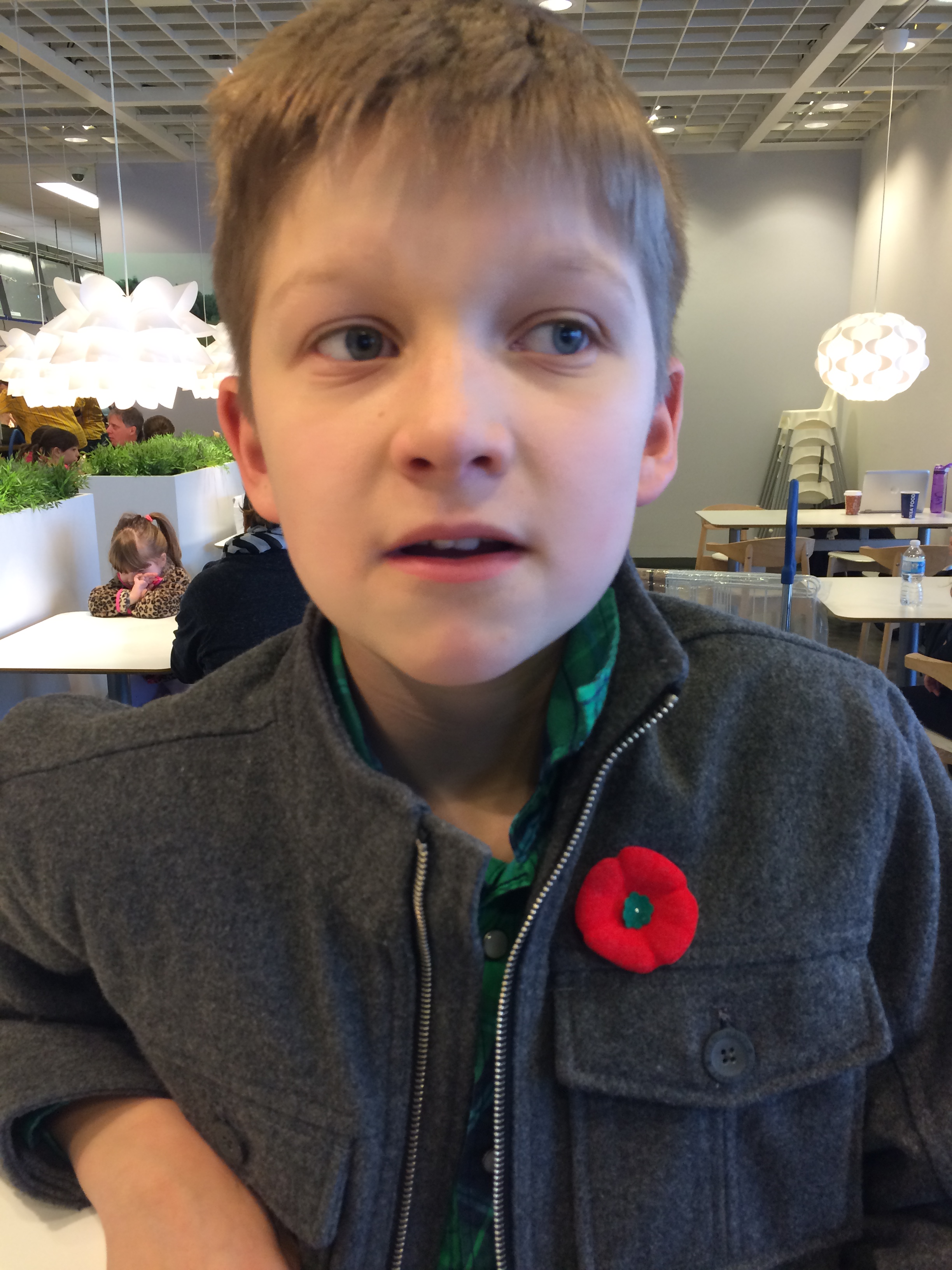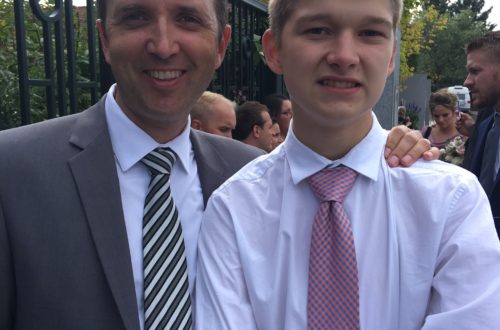
Temple Grandin Still Hates Algebra
Temple Grandin absolutely hates Algebra. I knew that already–she had mentioned it during her 2013 lecture here in Fargo–and six years later, in Crookston, Minnesota, she said it again. Multiple times. In a college gymnasium–GYMNASIUM–full of people. Overhead lights off. Stage spotlight on. People restless trying to find a comfortable position in the wooden bleachers. A service dog on the basketball court pacing around the floor. The exit doors wide open with people still trickling in and out throughout the lecture. I was astounded. This couldn’t have been a worse venue for sensory overload for an individual with autism.
It was a venue in stark contrast to the ones I heard her speak 6 years ago. Once in a conference room in the Holiday Inn with limited seating and closed doors. The second time in a reception hall in the NDSU Student Union–larger audience–but a mostly controlled setting. And honestly, I think the gymnasium threw her off a little bit. She seemed anxious. Jumping from one topic to the next, sometimes in mid-sentence. Clicking ahead slides before finishing her thought. I also think she was more scattered and less organized because of her speaking assignment from the University. The University of Minnesota Crookston introduced her by saying they asked her to speak on autism, special education, animal science and ethics–pretty much everything. In my stint as a writing instructor, I can tell you right now that’s a recipe for disaster for anyone. One topic only. That’s what a thesis sentence is for.
Despite the overstimulating venue and unfocused speaking topic, I gleaned some good stuff from her lecture. Some of her points I’ve heard before. Some are new. So here are the highlights (in bullet points) of Temple’s Crookston (with some of my thoughts attached):

Learning:
-People need touch in order to perceive. Sometimes you need to get off the computers.
I agree with this 100%. Learning comes from interacting with the world around you. I’ve found with J this is really important too. In math it helps sometimes to touch the numbers or letters he’s working on in a step (this is how we FINALLY got him how to graph a line correctly on his own). I’m not sure why it works with J, but I have a feeling that “touching” the letters or numbers helps him keep his place visually since he struggles with visual processing.
-Arts foster scientific success. As someone who works so much in the fine arts, I couldn’t agree more.
-Learn how to work. Learn the daily life skills. This is something Temple has brought up before. She loves to emphasize 1950s/1960s manners and having children learn how to find things and pay for things at the store. She also added that in academics studying needs to be a path to a goal. I feel like we need to be better at letting our kids know what we want them to be able to do with the skills they are learning.
-Learn to be a life-long learner. Maybe it’s because Steve and I work so much in higher education, but I feel like our entire society should have this mentality. Right now, people graduate from high school, tech school, university, get their degree or certification and think, “I’m done with education.” Wrong. You are never done with education and learning.
I also feel like this is where the public education system fails so many of our kids on the spectrum. Our kids have until they are 21 to have a public school supported learning experience but after that, those services are gone. Time’s up. Many of these kids have the potential to learn past that, and have taken longer to educate because of learning delays. J will definitely be a life-long learner. He loves it. We’re going to make sure it’s going to happen. And I’m sure we’ll have to be creative in how to make that happen.
Interacting with kids on the spectrum:
–Not all kids on the spectrum think in pictures. “Thinking in pictures” has been Temple’s explanation of all kids on the spectrum for a very long time (because that’s how she thinks). She mentioned 6 years ago that there are other types of thinkers on the spectrum, and this lecture she spent a little more time on the different thinkers. J is DEFINITELY NOT a visual thinker. And it’s even more apparent now that he’s in visual therapy–we are practically teaching how to think in pictures. From what I can tell, J is a Verbal Thinker. This may seem counter intuitive at first if you know J because he struggles so much to express his thoughts verbally, but here are some of the “symptoms.” Verbal thinkers overgeneralize in their speech (which is J’s major communication struggle. He’s always trying to take shortcuts in words and group words into big categories instead of learning the differences and nuances between different words–especially synonyms). They are good at verbal facts (J is Mr. Factoid). They are good at language translation (J aced Introduction to World Languages–but once he dove into French and had to require to put individually translated words together, he struggled). J is great at the mechanics of language–grammar. These are signs of a verbal thinker.
–Visual thinkers see risk. Temple made the argument that because she’s a visual thinker, she can “see things” that may be problematic in a situation that “typical thinkers” don’t see. She talked a lot about her slaughter designs and how people couldn’t “see” that a dangling rope or shadows or even certain sounds would be terrifying to animals because typical thinkers don’t think visually. At first, this sounds like it makes sense. But as she mentioned sounds as part of her observations, it made me think that maybe it’s not “visual thinkers” that see risk but people who become anxious through over-stimulation that “see things” that other people don’t. I think being anxious makes you “see” the world differently.
-Autism thinks in sensory terms. Temple went on to say that people on the spectrum think in a sensory based world, not a word based world. This made me think of J and how we might be able to get him to understand language better. What if we taught J associations of words emphasizing sensory experiences with them? It’s kind of like how Anne Sullivan taught Helen Keller language. Helen was blind and deaf and so Anne taught Helen to feel objects and then signed the words in her hand. VERY sensory based teaching and learning with language.
-Stretch autism kids out of their comfort zones. Great reminder. Whether you are on the spectrum or not.
Math:
-Temple Grandin hates Algebra and firmly believes that kids on the spectrum shouldn’t have to learn it. Algebra is definitely a struggle for J, but as he struggles through it I get better insight into how his brain works (or doesn’t work). I think you need to try all the things if, at least, to see how your child’s brain is functioning
-Temple Grandin stated that she was a whiz at math up until 6th grade. After that, math went downhill fast. I mention this because it’s the exact same experience we’ve had with J.
With all of Temple’s anxiety, with all the over-stimulation, I had a really hard time keeping up with her lecture. It was a really interesting contrast from the previous times I’ve heard her. But in a weird way it was a little comforting. My first encounter with Temple I thought, “J is not even close to Temple’s autism” but this time I thought, “J’s autism is a lot closer to Temple’s autism than I thought.” Temple was super distracted by what was going on in the room–much like J becomes when he goes to school. She got really stuck on airplanes during the lecture and kept randomly going back to airplanes throughout the lecture. I think it had something to do with her flight to Fargo. There was something wrong with the flight attendant’s cart and she was stuck on how to fix it. J gets like that too. Even though Temple had an “outline” with the slides it was hard for her to “stick to script.” That happens to J sometimes too–especially when he’s anxious or overstimulated. I got to see the calmer Temple and the overstimulated Temple, and got to see J in both lights too.
I’m so thankful I’ve been able to see Temple speak on multiple occasions. I know many parents with kids on the spectrum don’t get that chance. She’s such an inspiration and advocate for the autism community. And she helps me understand my son better 🙂





One Comment
J Phillips
Helen Keller had to learn a new form of language (she was deafened semi-post lingually, at 18 months old when she already had learned to speak.) and the only avenue was tactile sign. (She was the second or so deaf-blind girl educated in America I think; Laura Bridgeman was the first one.) Without an accessible form of language early on, deaf infants can suffer irreversible language delay or deprivation.
Blind infants can suffer some language delay as well, for different reasons, because they learn the words but not the environmental referents, so they are also encouraged to interact with objects directly to learn nouns, adjectives and such more directly and increase environmental awareness. ome blind infant behaviors can be similar to that of infants with autism: head banging, stimming, which for blind infants decrease as they develop increased language skills and interaction tools, and increased mobility (which needs to be helped and encouraged some early on– imagine learning how to stand and walk from a crawl without sight.)
Otherwise, without deep comprehension, words are a form of music, I suppose; with rules and fun sounds, a form of social interaction. Auditory learning is very linear and less flexible than visual learning, but more “chunks” can fit in auditory memory than in visual memory (which uses more brainpower– just like a photo or video file uses more bytes than a simple audio file.)
Math seems to depend on symmetry between the hemisphere, thick grey matter (glia) and learning math probably depends on the cerebellum (which mediates movement and sequential learning and prediction of things.) There’s also a link between storytelling, taking multiple POVs mentally. and math ability later on.
So, I think role playing and simple drama work could be benefical for many things (and there ARE actors who have Asperger’s or autistic spectrum issues– Darryl Hannah and Dan Ackyroyd are two famous ones.) Acting out scenes and using props can help work to develop stronger visualization (or spatial kinetics) of things.
Temple Grandin can visualize things in 3-D and spatially, from the cow’s viewpoint, but she also tends to walk through things and look for the fear triggers. She knows what triggers cattle. So she has a limited theory of mind, particularly for prey animals and cattle from working with them.
This intensity shows a marked focus on body language rather than any sort of face reading skill.
I don’t know if she’s ever addressed the possibility she has prosproagnosia or not- she can draw things accurately but it doesn’t mean she remembers human faces well enough to recognize them in all orientations and expressions. Face-blindness does affect people’s social skills even when they can read expressions just fine and have good theory of mind… because they can’t recognize people well without depending on other cues as to who they may be.